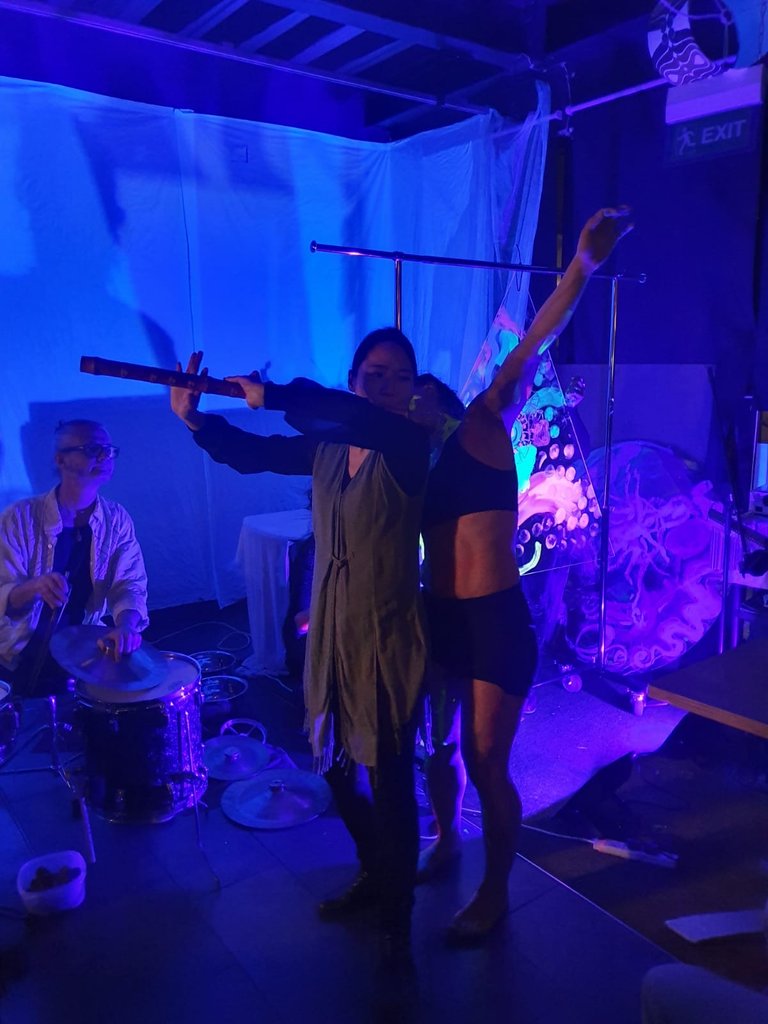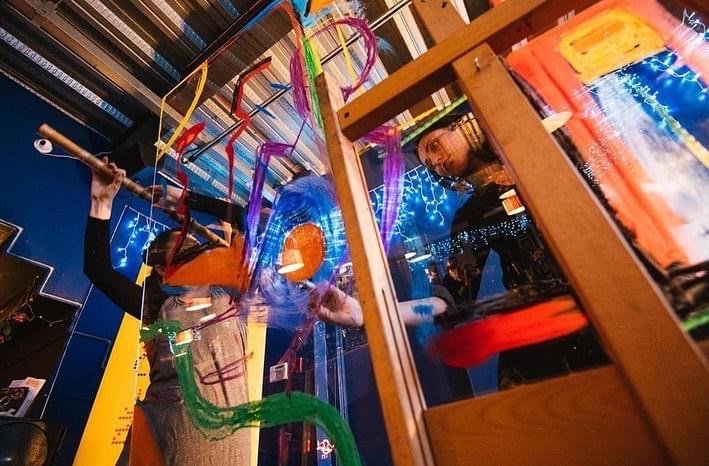Hi Hive,
Before the lockdown I had the pleasure of working with Taegum Player Hyelim Kim on a few different interdisciplinary art and performance projects. I want to share this interview I wrote about her! She is an incredible musician, performer, creative, mom and she's got a Phd!! I hope you enjoy this interview.

Tell us about your life in improvisation
Some genres of traditional Korean music, especially Korean Folk Music are heavily based on improvisation, even though there are also folk music genres relying on traditional Korean music notation. When i learned the improvisation based style i mainly learned by ear. These days, traditional music is being taught in schools and it became very institutionalised, so now even the styles based on improvisation use music notation.
I started playing traditional Korean music in my early teens.I Had known about it from when I was much younger … about 7 or 8 years old. I have been exposed to the Concept of improvisation from the early days of my music education.

is your professional practice now mainly based on improvisation?
Actually what i do now is quite broad. I am always keen on using elements of improvisation in my composition and performance profile. I also play in a lot of commissioned projects that are created by other composers. Sometimes they are open to improvisation, but on most occasions i play the music the way it is written. All in all i would say it is quite balanced... some composed music, some improvised music.

What does the connection of movement and music mean to you?
I try to be closer to the sincere nature of myself. When i listen to myself when i am playing i naturally want to react to the music. My body wants to react to it. There’s this culture around playing this type of music where you are supposed to fix your posture and stand still. As a musician you think this is more presentable. Deep down inside of me my body actually wants to move to the music i am playing. I want to free myself from this shackle of the culture and how it is supposed to be. I ask myself: how can i move my body as a musician? I want to explore this to get closer to myself and my artistry.
Was there a certain moment were you realised standing still with a certain posture doesn’t really represent who you are?
I found that musical language is very specific to a culture so when i started to work with musicians from different cultures we cant speak to them in our own musical language directly so i wanted to find some kind of a common ground, away from the specific musical languages we are so accustomed to. I thought using the language of body movement can be shared by shared by all people, no matter what cultural background they have. This is a language we all have in common and are able to use. I started paying attention to alternative ways of communication with other artists and musicians from other cultures.

When you performed at Resonances performances: “Les Reves” you started a duet with Petra Haller, the dancer. How was it for you to interact with her directly on stage?
I
knew that all the participants were so specialized in their own disciplines but the reason why we are all there together was to go beyond these disciplines. I wanted to break the boundaries between the music and movement. I think that was the purpose of us being there. I wondered what i can do. If i had stuck to only music i would have stayed confined. I wanted to express something with my body and thereby defy this border. It felt very liberating. I really enjoyed interacting with the dancer as a musician but when i started moving i felt an even closer communication.
You spent some time learning Laban’s method of movement and are clearly very interested in moving yourself. What do you think causes this hunger for interdisciplinary performances. What do you think can an interdisciplinary performance offer to the audience that a specialised performance can’t?
I think we all are already programmed in a certain way because of our upbringing or where we come from, even when it comes to which style of music or art we appreciate. I would like to challenge this programming. These days there are so many issues regarding skincolor, cultural differences, accepting diversity. The reason we can’t fully embrace our differences is because we stick to our programmed way of thinking, our perception and our ignorance. I want to challenge this kind of thinking by breaking down the boundaries in art myself.
Does the visual art that is being painted during the performances changes the way you play?
Yes. I think so! I am aware of the different perspective. I gaze at the drawings. I see the objects. It makes me more aware of being seen. I ask myself how should I position myself to create a relationship?

Can you have a social impact with improvised shows?
I think improvisation celebrates individuality. When you have a fixed goal or a fixed leader you are creating a hierarchy and the individuals have to serve the system to reach the end goal. When you play for an orchestra there is a clear hierarchy and serving the system is functional, however not every instrument gets to raise its voice enough. Improvisation allows each individual to contribute something and you create the end goal as a collective. Improvisation conveys a very important social message. The value of the individual.
Cross posted from Steem.
Congratulations @petrahaller! You have completed the following achievement on the Hive blockchain and have been rewarded with new badge(s) :
Your next target is to reach 30 posts.
You can view your badges on your board and compare yourself to others in the Ranking
If you no longer want to receive notifications, reply to this comment with the word
STOPCheck out the last post from @hivebuzz:
good music